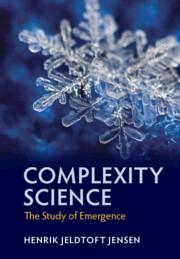We discussed in Sec. 3.5 how the dynamics of complex systems commonly involve intermittent bursts of activity
Question:
We discussed in Sec. 3.5 how the dynamics of complex systems commonly involve intermittent bursts of activity and the importance of developing methods enabling forecasting of the events. Without going into the details of the mathematics, which we will return to in Chap. 13, we will in this project consider attempts at forecasting earthquakes and financial crashes and compare in broad terms to the approach suggested in [383].
(a) Briefly review the approach to forecasting earthquakes based on machine learning [223].
(b) Briefly summarise the review ‘Forecasting financial crises in emerging market economies’ [360].
(c) Consider whether the machine learning approach of (a) can be generalised to apply to (b).
(d) Think of how the approaches in (a) and (b) compare with the forecasting in terms of growing fluctuations suggested in [383] and [385].
The big financial crash relating to the collapse of Lehman Brothers occurred in 2008 seven years after Scheffer and collaborators first published the ideas that abrupt transitions can be forecasted by the increase in fluctuations preceding the transition.
(e) What does the fact that the 2008 financial crash took the world by surprise imply concerning the relevance of the forecasting approach suggested by Scheffer and collaborators?
(f) By tracing the citations of the papers [383, 385] discuss if cases can be found where transitions have been predicted identifying an increase in fluctuations.
Step by Step Answer:

Complexity Science The Study Of Emergence
ISBN: 9781108834766
1st Edition
Authors: Henrik Jeldtoft Jensen





